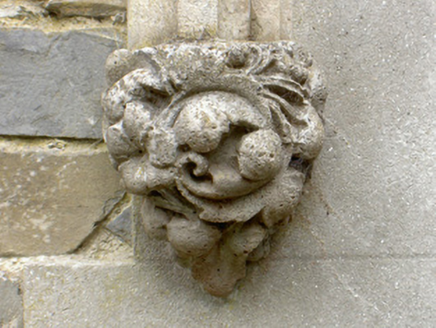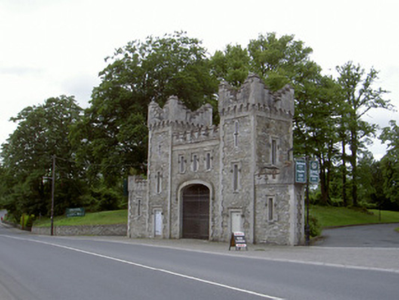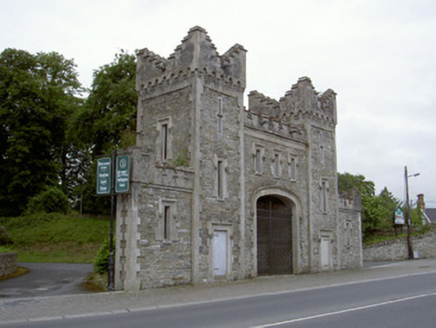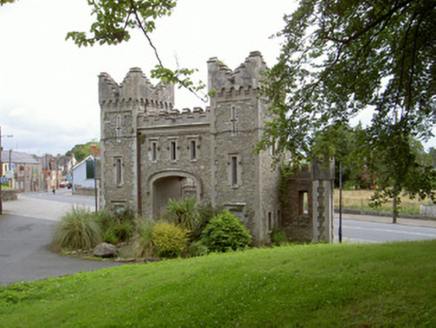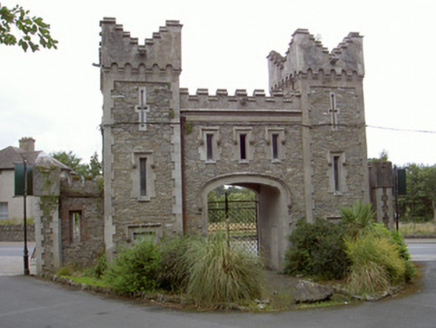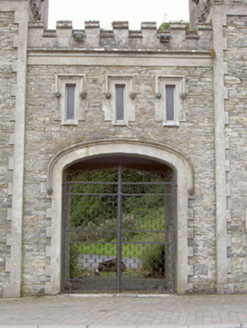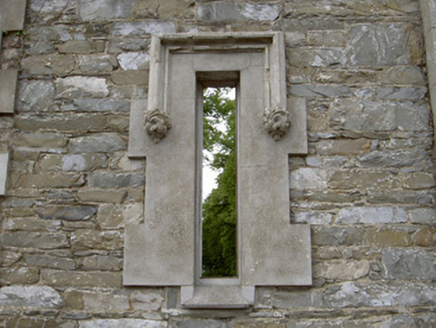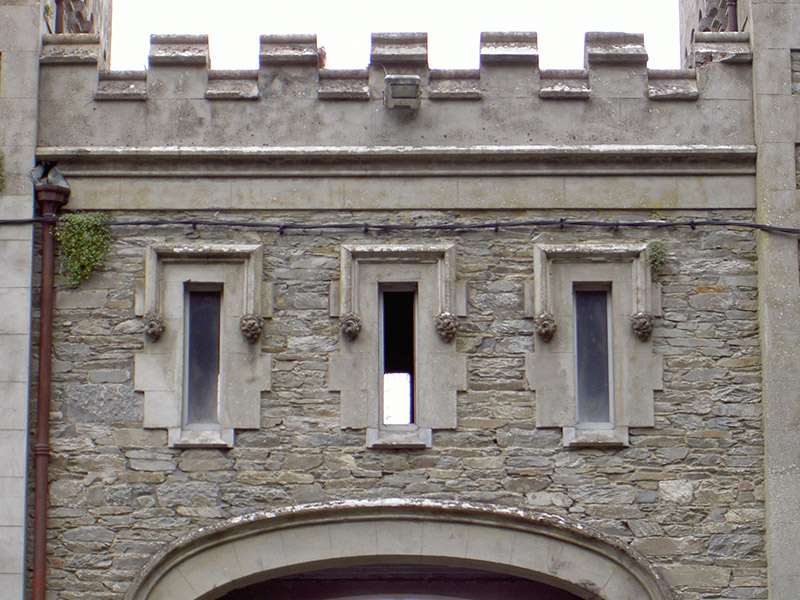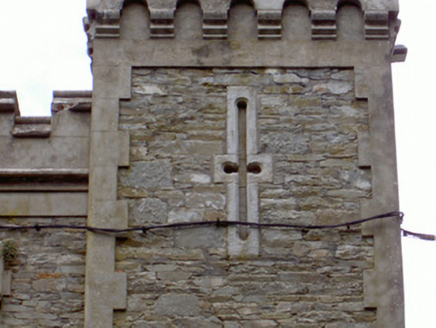Survey Data
Reg No
13826005
Rating
Regional
Categories of Special Interest
Architectural, Artistic, Historical, Social
Original Use
Gate lodge
In Use As
Gates/railings/walls
Date
1800 - 1840
Coordinates
305920, 295243
Date Recorded
06/07/2005
Date Updated
--/--/--
Description
Freestanding castellated entrance gate screen, built c. 1820. Identical east and west elevations, central single-bay two-storey castellated block with carriage arch, flanked by single-bay three-storey castellated towers and single-bay single-storey castellated screen walls to north and south. Roofs hidden by castellated parapets. Cast-iron downpipe to west elevation. Squared and coursed rubble stone walling, projecting smooth rendered quoins, central bay with smooth rendered frieze, cornice and crenellated parapet; towers with frieze surmounted by corbelled crenellated parapets. Square-headed loop windows, smooth rendered block-and-start surrounds, chamfered stone sills, limestone hood mouldings with foliate stops, openings now blocked, balistraria window openings to second floor of north and south towers. Central elliptical-headed carriage arch opening, smooth rendered block-and-start surround, carved limestone hood moulding with foliate stops, elaborate wrought-iron gates; square-headed door openings, smooth rendered block-and-start surrounds, carved limestone hood mouldings with foliate stops, painted timber chevron-sheeted doors with decorative wrought-iron strap hinges. Street fronted, at east end of driveway to Castle Bellingham.
Appraisal
These handsome and impressive entrance gates once gave access to the fine demesne of Castle Bellingham, an important and historical estate. Though no longer used as an entrance, the gate screen stands as a reminder of a past era in Irish history and as an insight into the nature of the Castlebellingham estate in its heyday. The use of the Gothic Revival style in the crenellated towers entrance bay and loop window openings with ornately carved hood mouldings and stops are a tribute to the craftsmen of the past and echo the style used in the main house. These gates add to the architectural heritage of the village.
